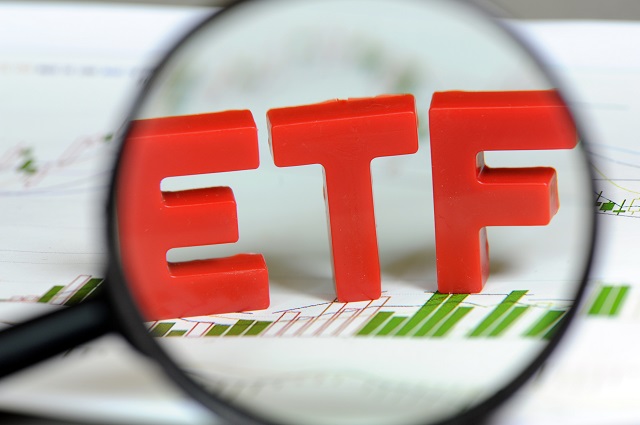State Street Global Advisorsthe asset management division of State Street Corporation, today announced data from the ETF Impact Surveya global study analyzing investor appetite and perception of ETFs, as well as market sentiment and macroeconomic drivers in the US, APAC and EMEA.
In particular, the study is based on the views of 1,700 investors in eight countries and reconfirms the popularity of ETFs as a vehicle to optimize investment strategies.
The study found that those who already hold holdings in ETFs indicate that they do tools helped improve the overall performance of the portfolio (73% globally vs. 78% in EMEA), while the majority of respondents believe ETFs have improved their investment capability (67% globally vs. 72% in EMEA). Notably, a majority (53%) of respondents in EMEA (compared to 44% globally) believe the launch of the first ETF represents the most significant investment innovation in recent history.
“The ETF industry has democratized investing, allowing investors large and small to access institutional-grade solutions that offer efficient and affordable exposures to all areas of the global investment market,” he said. Rory Tobin, Head of Global SPDR ETF Business di State Street Global Advisors.
“The ETF industry as a whole has demonstrated its resilient nature during major market events, from the bursting of the dot-com bubble in the late 1990s, to the 2008 global financial crisis and, more recently, all ‘extreme volatility of the pandemic era’.
Liquidity and diversification
Whether or not they have ETFs in their portfolios, globally over half of investors surveyed agree that ETFs:
- I am an investor-friendly product (58%),
- They are more diversified than other investment products (54%),
- They have greater liquidity which allows for a quicker reaction to market changes (52%),
- They have a lower expense ratio than mutual funds (51%),
- They mitigate risk in volatile markets better than other investments (51%).
ETFs’ ability to include different types of funds across a broad range of asset classes has only added to the instruments’ appeal. In an uncertain market environment, more than half (52%) of the investors surveyed believe that the ETFs offer better liquidity than other investment instruments, allowing you to react more quickly to volatility.
At the same time, 54% of the sample believe they offer one greater diversification compared to other investment products.
“The ETF Impact Survey clearly shows that diversification remains a top priority for investors. Nearly half say they prefer investing in an entire index rather than selecting one or more stocks, while the flexibility offered by ETFs is seen as a valuable asset for those looking for the ability to change course in real time should an unexpected market opportunity present itself to be exploited or a risk to be avoided,” he said Matteo Andreetto, Head of SPDR EMEA Business di State Street Global Advisors.
Liquidity, priority for market uncertainties
Globally, nearly seven out of ten investors believe equity market volatility will persist for at least the next 12 months, and three out of five agree that, in such an environment, it is essential to have more liquid investments.
While investors across all three regions are bracing for higher volatility in 2023, the majority believe the S&P500 will perform positive or zero by the end of the year. Less than a quarter believe performance will be negative.
Across EMEA, investor sentiment about the market’s potential growth is also mixed: 37% are bullish on the S&P, believing it will rebound, 35% are neutral, believing it will remain stable, while 20% are bearish and he believes it will decline. At a macro level, the biggest concern of investors globally is rising inflation (72%), followed by the economic outlook (61%) and higher rates (60%).
The United States has the highest pessimism about its forecasts for the country’s economy over the next 12 months, with an increase of more than half in the last three years (from 25% to 38%). EMEA investors are more optimistic than their US counterparts on the economic outlook (45%), but the majority (55%) remain neutral or pessimistic about the economic performance in 2023.
Generational and Gender View:
In terms of gender, globally the percentage of men who hold ETFs in their portfolios is higher than that of women (45% vs 39%) and men are more likely than women (68% vs. 54%) to say buying and selling ETFs is easy. Men are also more likely to believe market volatility will persist (71% vs 64%) and agree on the importance of having more liquid investments during times of market uncertainty (65% vs 55%). When it comes to global attitudes towards ETFs from a generational perspective, it seems that the Baby Boomers have learned to deal with market volatility. While this category of respondents still believe volatility will persist, State Street Global Advisors’ ETF Impact Survey found that this generation is not fazed or distressed by this phenomenon.
Globally, millennials have the most positive attitude towards ETFs compared to any other generation surveyed:
- 81% of Millennials say ETFs have improved the overall performance of their portfolio, compared to 73% of Gen Xers and 48% of Baby Boomers.
- 70% of Millennials agree that ETFs offer more liquidity during times of market volatility, compared to 47% of Gen Xers and 25% of Baby Boomers.
- 67% of Millennials believe that ETFs are more diversified products, compared to 53% of Generation X and 34% of Baby Boomers.
- 66% of Millennials plan to invest in ETFs in the next 12 months, versus 46% of Generation X and 20% of Baby Boomers.
